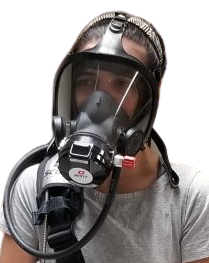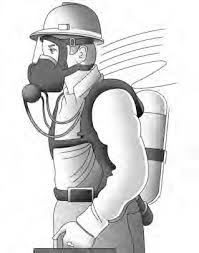Respirator and Mask Types
Respiratory protection is used to prevent exposure to contaminates in the air or in oxygen deficient atmospheres. Respiratory protective devices vary in design, application and protective capability. It is important to work with EHS to determine the appropriate type of respiratory protection needed to prevent occupational illness or injury.
Because use of respiratory protection can affect breathing and due to other risks involved, medical approval and training is required prior to use. Enrollment in the KSU respirator program is mandatory for employees required to use respiratory protection at K-State. Fit testing is required for tight fitting respirators. Contact EHS for additional information. Face coverings for COVID-19 community protection are not considered respirators and don't require approval.
Face Masks/Coverings
Face coverings or face masks such as those mandated to help prevent community spread of COVID-19 are not respirators. They are not considered personal protective equipment (PPE) in the typical sense because of the limitations of face coverings for providing adequate “personal” protection. Another perspective on this is that if everyone in the workplace wears a face covering, then everyone in the workplace is better protected from infection.
According to the American Lung Association, wearing a face covering does not cause low oxygen levels and there is no clinical evidence of harm from their use. Even individuals with chronic lung disease should be able to use face coverings (non-respirator) without affecting their oxygen or carbon dioxide levels.
- Do not offer the wearer protection from airborne contaminants.
- Protects others from respiratory droplets of the wearer (i.e., it is a source control for droplets and may reduce the generation of aerosols)..
- Disposable paper masks are intended to be used and disposed of at least daily (single use).
- Reusable fabric coverings may be re-used but should be laundered daily.
- Fabric masks should be multi-layer for optimum protection.
- Does not need fit testing or medical approval to wear.
- Tips
- Coverings with mold-able nose pieces provide better fit and lower fogging of glasses.
- If it is not covering the nose and mouth, it offers no protection.
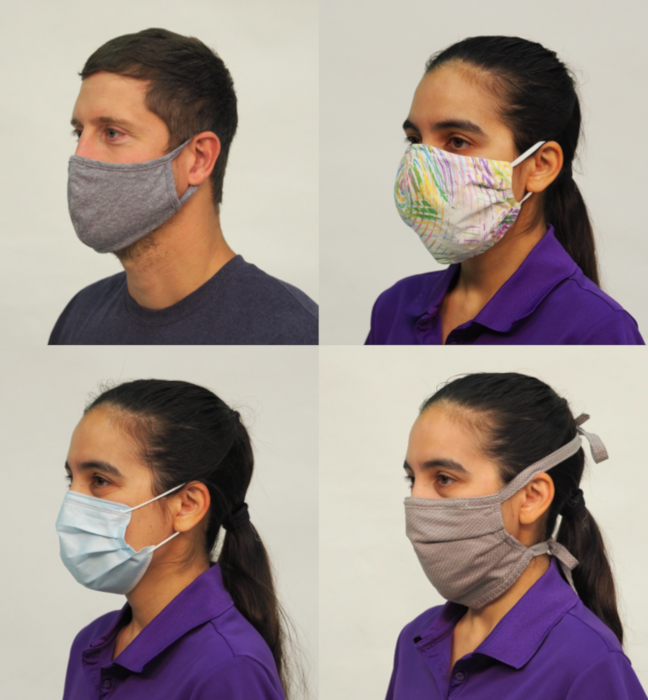
IMPORTANT: Face coverings and respirators with exhalation valves are not acceptable for use in the prevention of community spread of COVID-19 because they allow expelled air from the wearer to exit the mask/covering. The following are examples of masks with exhalation valves.
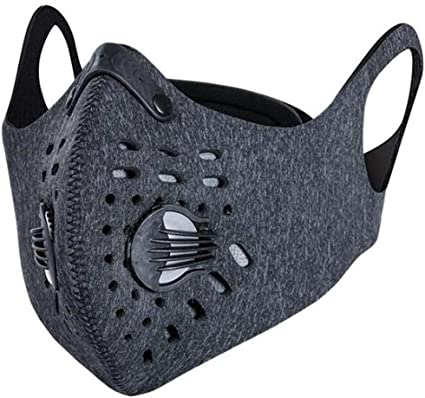
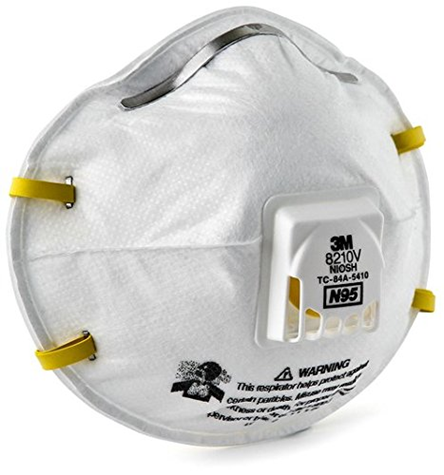
Surgical Masks
A surgical mask is a loose-fitting, disposable device that creates a physical barrier between the mouth and nose of the wearer and the immediate environment. They may come with or without a face shield. These are often referred to as face masks. Though often used in the healthcare setting, not all face masks are protective as a surgical masks. Surgical masks are regulated under 21 CFR 878.4040 and are intended to be worn by operating room personnel during surgical procedures to protect both the patient and the operating room personnel.
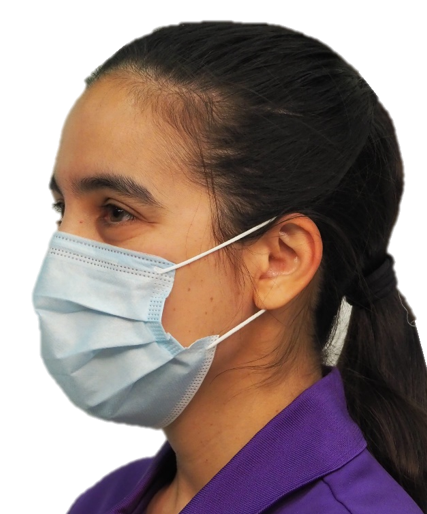 Surgical masks and other healthcare face masks designed for specific medical procedures may look like other face coverings, but only FDA approved masks offer additional protection from liquid droplets and may have coatings to improve wearer and patient protection. These may be labeled as surgical, isolation, dental, or medical procedure masks and may be sterile or non-sterile. If using in a surgical suite, only sterile masks should be used.
Surgical masks and other healthcare face masks designed for specific medical procedures may look like other face coverings, but only FDA approved masks offer additional protection from liquid droplets and may have coatings to improve wearer and patient protection. These may be labeled as surgical, isolation, dental, or medical procedure masks and may be sterile or non-sterile. If using in a surgical suite, only sterile masks should be used.
- Do not provide the wearer reliable protection from smaller airborne particles.
- FDA-approved medical masks offer the wearer protection from liquid droplets and may have coatings to aid filtering.
- Disposable or single use.
- Not a respirator.
- Does not need fit testing or medical approval to wear.

Filtering Facepiece Respirator (FFR) or “N95”
Filtering facepiece respirators, commonly known as N95 respirators are disposable respirators. Like other tight-fitting respirators, they require a fit test to ensure the respirator forms an adequate seal around the face. They are considered single-use and should be discarded after each use or when they become damaged, difficult to breathe through, soiled or when they no longer form a tight seal around the face.
Filtering facepiece respirators come in many styles and are used in various industries such as healthcare, grounds, and construction to protect the wearer from particulates or bio-aerosols. These respirators have ratings based on their filtering efficiency. They are 95, 99 or 100 percent efficient at filtering small particles. They are also designated as N, R, or P, to indicate if the respirator is or is not oil resistant.
When properly fit tested and worn, N95 respirators offer the wearer adequate protection from airborne particles. In the United States, standards affecting these respirators are developed by NIOSH and FDA and their use in the workplace may be regulated by OSHA. FDA-approved N95 respirators may also offer additional liquid barrier protection and/or validation of filter efficacy.
There are other standards for these respirators in other countries. When supplies are limited, non-NIOSH approved alternatives may be considered. Please note that many “K”N95 masks being sold in the US currently may not offer the same level of protection as an N95 respirator. Contact KSU Environmental Health and Safety (EHS) to learn more about acceptable KN95 and other alternatives when you are unable to find NIOSH approved N95s as a result of supply shortages.
Some of these respirators have exhalation valves. Respirators with exhalation valves may allow respired air from the wearer to leave the mask and may not be fully protective of patients in certain healthcare situations. Any face covering or respirator with exhalation valves do not meet the KSU COVID-19 Face Covering Policy expectations.
Use of respirators, including N95s, requires medical approval, training and fit testing to ensure wearer safety and health. Visit www.k-state.edu/safety/occupational/respiratory-protection/ for information and forms. Voluntary use of filtering facepieces is permitted only when there is not a known occupational exposure risk at or above the permissible exposure level (PEL). Review voluntary use expectations and training with EHS.
- A type of air-purifying particulate respirator (APR).
- Does not provide protection from chemical vapors or gases .
- Disposable.
- FDA-approved medical N95s offer wearer protection from liquid droplets and may have coatings to aid filtering.
- Requires fit testing, medical approval and training prior to use.
- Assigned Protection Factor (APF) = 10.
- Only filters particles.
- P, R or N 95/99/100 types.
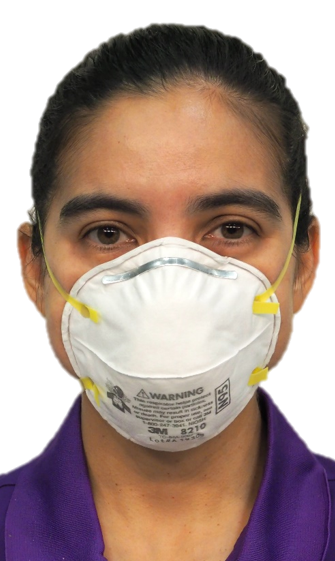
Half Face Elastomeric Respirator
Half-face elastomeric respirators that cover the nose and mouth of the wearer only. They are re-usable tight-fitting masks that are equipped with disposable contaminant filtering cartridges. There are many types of disposable filter cartridges available for a variety of airborne contaminants such as chemical vapors, welding fumes, toxic vapors or gases, particulates, or bioaerosols that contain pathogens.
When properly worn and fit tested to the wearer these respirators provide protection from airborne contaminants, but only if they are equipped with the proper filter for the hazard type and concentration present. It is important to work with EHS to select the appropriate filter type for the nature of the hazard present and to learn the change-out frequency for these filters, particularly for those working with chemical hazards.
Elastomeric respirators have exhalation valves that allow respired air from the wearer to leave the respirator and are not ideal for use as COVID-19 face covering or for surgical suites. Contact EHS for guidance in selecting the appropriate form of respiratory protection for your work activity and hazard type.
- Re-usable respirator.
- Uses filter, cartridge or canisters that are disposable and contaminant-specific.
- Accommodates (filter/cartridges) protection for gas, vapors and/or particulates.
- Requires a fit test, medical approval and training prior to use.
- Assigned Protection Factor (APF) = 10.
- Equipped with exhalation valves (not for use as COVID-19 face covering).
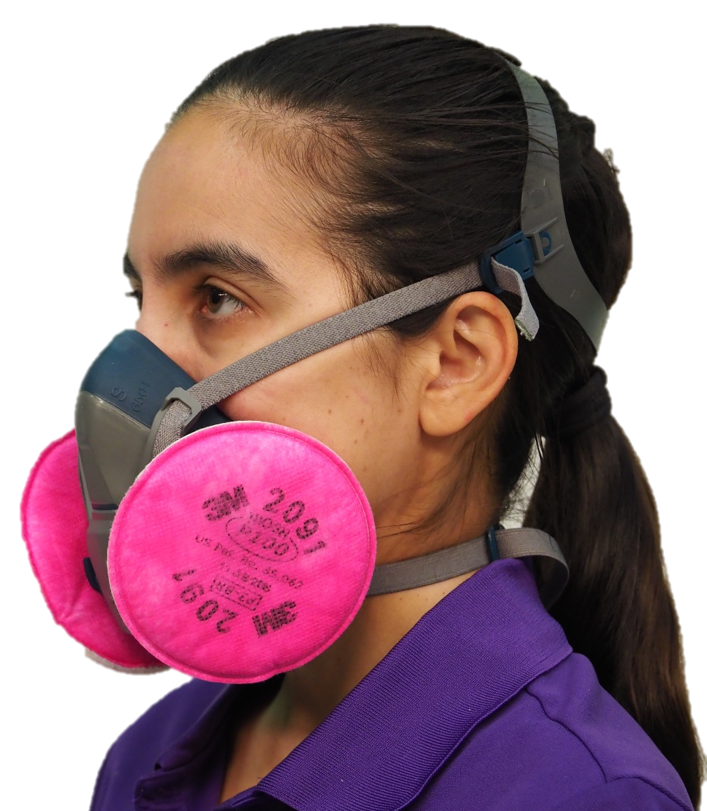
Full-Face Elastomeric Respirators
Full-face elastomeric respirators are tight-fitting respirators that cover the entire face of the wearer. When properly worn and fit-tested to the wearer, these respirators provide wearer protection from airborne contaminants.
Like the half-face elastomeric, they are used with disposable contaminant-specific filter cartridges. The type of filter cartridge is selected based on the nature and concentration of airborne contaminants (including chemical, particulate and pathogenic airborne contaminants). The filter efficacy diminishes with use and environmental factors so it is important to establish a filter change-out schedule appropriate to the work conditions. Chemical filter cartridges also have a shelf life (beyond which they should not be used).
Elastomeric respirators have exhalation valves that allow respired air from the wearer to leave the respirator). Contact EHS for guidance in selecting the appropriate form of respiratory protection for your work activity and hazard type.
- Re-usable respirator.
- Uses disposable filter/cartridges/canisters that are contaminant-specific.
- Accommodates (filter/cartridges) protection for gas, vapors and/or particulates.
- Requires a fit test, medical approval and training prior to use.
- Assigned Protection Factor (APF) = 50.
- Offer full-face and splash protection.
- Equipped with exhalation valves (not for use as COVID-19 face covering).
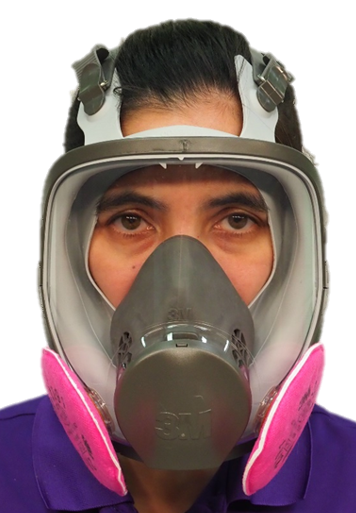
Powered Air-Purifying Respirators (PAPR)
Powered Air-Purifying Respirators (PAPR) are equipped with a battery-operated blower that delivers filtered air to the wearer. Like elastomeric respirators, PAPR are used with disposable contaminant-specific filter cartridges. The type of filter cartridge is selected based on the nature and concentration of airborne contaminants (including chemical, particulate and pathogenic airborne contaminants). PAPR are available in either tight-fitting or loose-fitting models. Tight-fitting models require fit testing. Both forms require medical approval and training for use.
Loose-fitting PAPR may be used with limited amount of face hair and some individuals find them more tolerable than tight-fitting respirators. Costs of not only the base unit but also the disposable filter-cartridges is significantly higher than elastomeric respirators. Hood styles provide some measure of splash protection. Hood models can be used with interchangeable or disposable headpieces to simplify disinfection or facilitate shared use.
- Re-usable respirator.
- Uses filter/cartridges that are disposable and contaminant-specific (particulate or vapor).
- Assigned Protection Factor (APF) = 25 to 1000 depending on type and manufacturer test results.
- Requires a medical approval and training prior to use.
- Requires fit testing for tight-fitting face piece type only.
- Most models allow un-filtered exhaled air from wearer to exist mask .
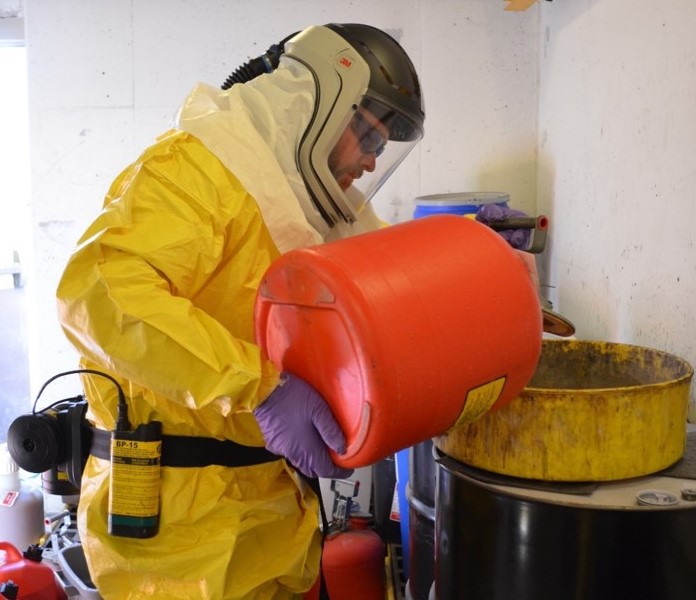
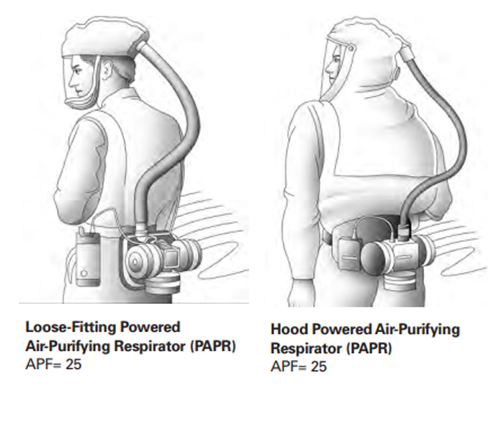
Atmosphere-Supplying Respirators
Atmosphere-supplying respirators are used to provide breathing air from a source independent of the ambient atmosphere (e.g., contaminated atmosphere). These include self-contained breathing apparatus (SCBA) where the air supply (tank) is carried by the user or respirators used with an air line connected to a separate air source (either a filtered compressor or air tank). It is critical that such respirator systems provide breathing air of optimal quality and that the equipment operates reliably.
Use of these systems requires specific medical approval and training. It is required that use of this type of respiratory protection be reviewed and approved in advance by KSU EHS.
- Re-usable respirator.
- Does not use filtering media, chemical cartridges or canisters.
- Uses supplied air (clean source of breathing air).
- Assigned Protection Factor (APF) = 10 to 10,000 depending on type and application (e.g., facepiece type, pressure demand or positive pressure mode).
- Requires fit testing, medical approval and training prior to use.
- Equipped with exhalation valves.
- May be used in immediately dangerous to life and health (IDLH) atmospheres.
